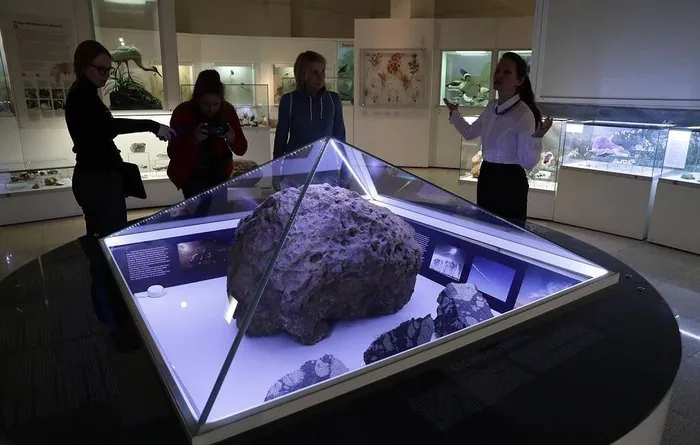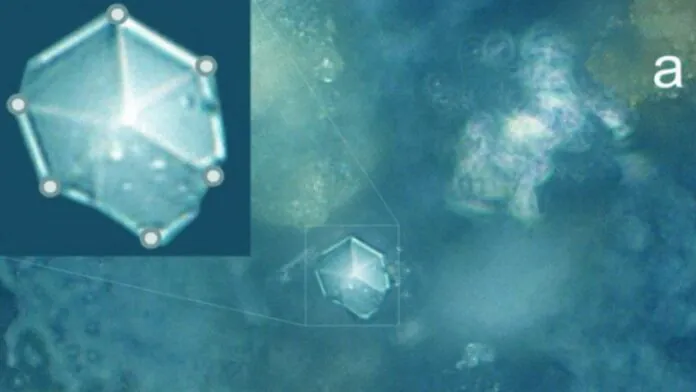© ROOT-NATION.com - Use of content is permitted with a backlink.
Researchers have discovered previously unseen types of crystals hidden in tiny grains of perfectly preserved meteorite dust left behind by a massive space rock that exploded over Chelyabinsk, Russia, nine years ago.
On February 15, 2013, an asteroid measuring 18 m in diameter and weighing 11,000 tons entered the Earth’s atmosphere at a speed of about 66,950 km/h. The meteor exploded at an altitude of about 23.3 km above the city of Chelyabinsk in southern Russia, showering the surrounding area with tiny meteorites and avoiding a colossal collision with the Earth’s surface. Experts at that time called this event a serious signal that asteroids pose a danger to the planet.

The explosion of the Chelyabinsk meteor became the largest of its kind to occur in the Earth’s atmosphere since the Tunguska event of 1908. According to NASA, it exploded with 30 times the force of the atomic bomb that hit Hiroshima. Video footage of the event shows the space rock burning up in a flash of light that was briefly brighter than the Sun before creating a powerful sonic boom that shattered windows, damaged buildings and injured about 1,200 people in the city.

In a new study, scientists analyzed tiny fragments of space rock left over from a meteor explosion, known as meteorite dust. Normally, meteors produce a small amount of dust when they burn, but these tiny grains are lost because they are too small to find, scattered by the wind, fall into water, or pollute the environment. However, after the explosion of the Chelyabinsk meteor, a massive plume of dust hung in the atmosphere for more than four days before finally falling to the Earth’s surface, according to NASA. Fortunately, layers of snow that fell shortly before and after this event trapped and preserved some of the dust samples until scientists could extract them.
The researchers came across the new types of crystals when studying dust samples under a conventional microscope. One of these tiny structures, which was large enough to be seen under a microscope, happened to come into focus in the center of one of the slides when one of the team members looked through the eyepiece. If it was somewhere else, the team probably wouldn’t have noticed her.

After analyzing the dust with more powerful electronic microscopes, the researchers found many more such crystals and looked at them in much more detail. However, even then, “finding the crystals using an electron microscope was rather challenging due to their small size,” the researchers write in their work published in the European Physical Journal Plus.

The new crystals had two distinct shapes: quasi-spherical, or “almost spherical,” shells and hexagonal rodes, both of which were “unique morphological peculiarities,” the researchers wrote.
Further analysis using X-rays revealed that the crystals are composed of layers of graphite – a form of carbon composed of overlapping sheets of atoms commonly used in pencils – around a central nanocluster at the heart of the crystal. The researchers suggest that the most likely candidates for these nanoclusters are buckminsterfullerene (C60), which is like a cage of carbon atoms, or polyhexacyclooctadecane (C18H12), a molecule made of carbon and hydrogen.

The team suspects that the crystals formed under conditions of high temperature and high pressure caused by the meteorite’s destruction, although the exact mechanism is not yet clear. In the future, scientists hope to trace other samples of meteorite dust from other space rocks to find out whether these crystals are a common byproduct of meteorite breakup or unique to the Chelyabinsk meteorite.
You can also help Ukraine fight with Russian occupants via Savelife or via an official page of the National Bank of Ukraine.
Subscribe to our pages in Twitter and Facebook.
Read also:
- Scientists have identified a possible source of Pluto’s moon red cap
- Scientists explained why the Phaeton asteroid has a strange blue color


